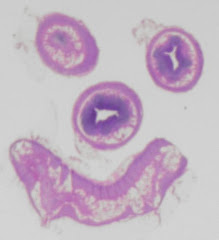Re-posted (edited version; I apologize for any resultant incoherency) - 2007/04/25:
Analysis of statistics which support good practice by PAs and their contribution to high quality healthcare have not been possible at many centres before. Most centres experienced a more or less gradual introduction of PAs which spanned decades. In contrast, the Interior has a clearly-defined date at which time PAs were introduced.
I have heard previously of oncologists and GI surgeons who want their patients' specimens only examined by PAs (links have been provided via the AAPA site on previous occasions). Finding a sufficient number of lymph nodes at the first sitting increases the provision of accurate reports in a timely fashion (turnaround times are reduced).
I have heard previously of oncologists and GI surgeons who want their patients' specimens only examined by PAs (links have been provided via the AAPA site on previous occasions). Finding a sufficient number of lymph nodes at the first sitting increases the provision of accurate reports in a timely fashion (turnaround times are reduced).
I would like to remind PAs of the importance of not only finding all of the lymph nodes in the mesocolon but also of identifying the proximity of lymph nodes relative to the radial margin (requiring that the margin be inked and then serially sectioned at right angles to the margin). If nodes are within 0.3 cm of the margin, this fact is a significant predictor for metastasis. If an insufficient number of nodes are found at the first exam, the fat should be re-examined after a day's fixation in a clearing solution such as modified Carnoy's fixative. A comment concerning the quality of the radial margin on total mesorectal resections (TME) should be added to your gross description. There are different methods of grading the margin which include a numbering system, from 1 to 3, reflecting the relative completeness of the margin. Another -- which I prefer -- uses description (ie. intact vs. incised, irregular and/or conically-shaped vs. incomplete) . While on the topic of TMEs, the prosector should give the location of the mass relative to the peritoneal reflection (above, astride or below). Except in cases where the tumour is situated very close to the anal resection margin, the rectum is to be left unopened, fixed over night, and serially sectioned transversely. This is without a doubt the best way of accurately ascertaining the depth of invasion and of providing with certainty the distance from the tumour to the radial margin.



No comments:
Post a Comment